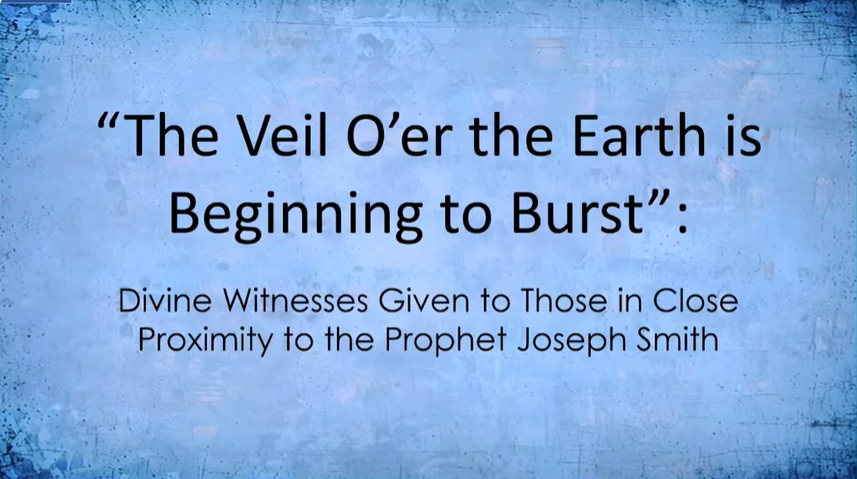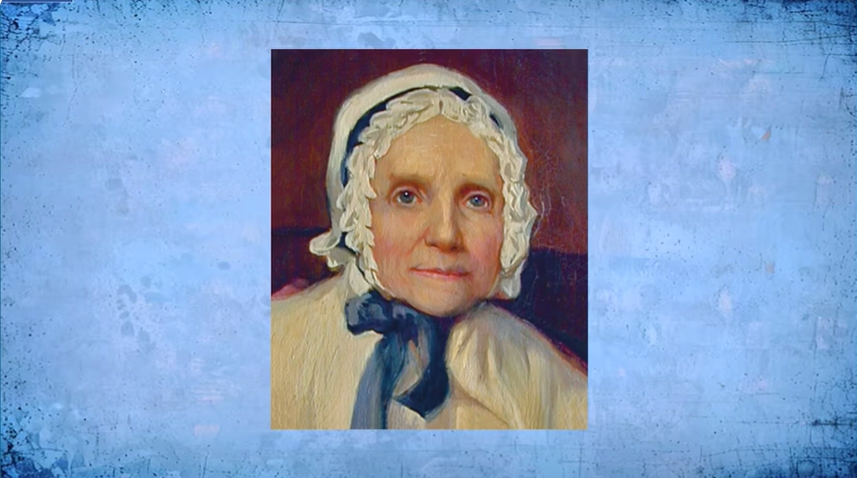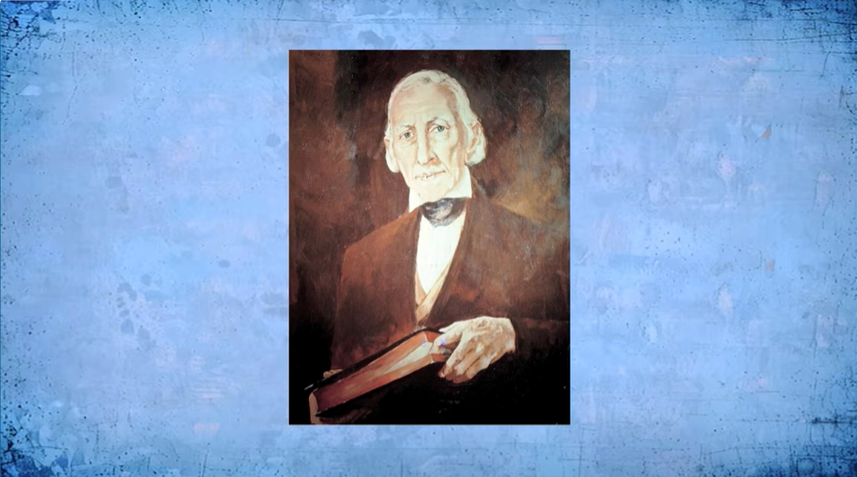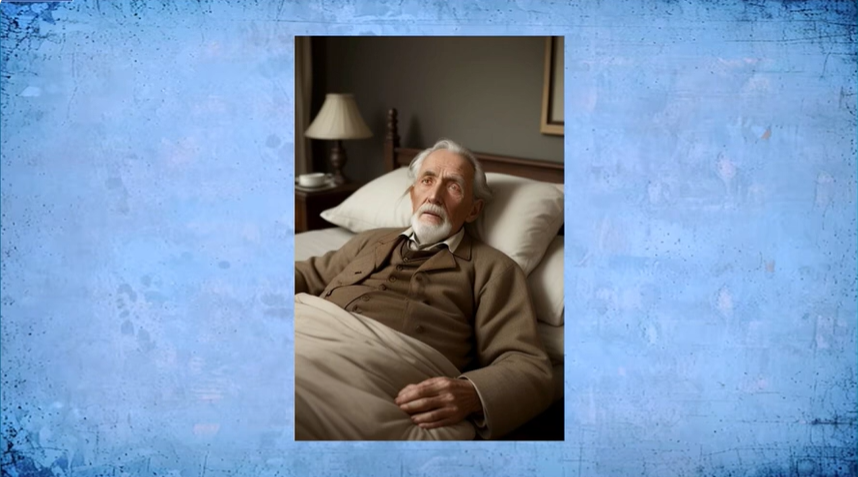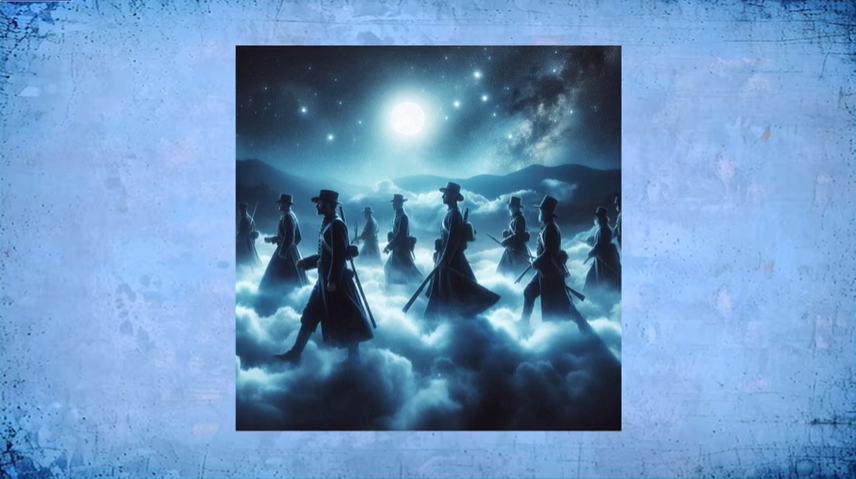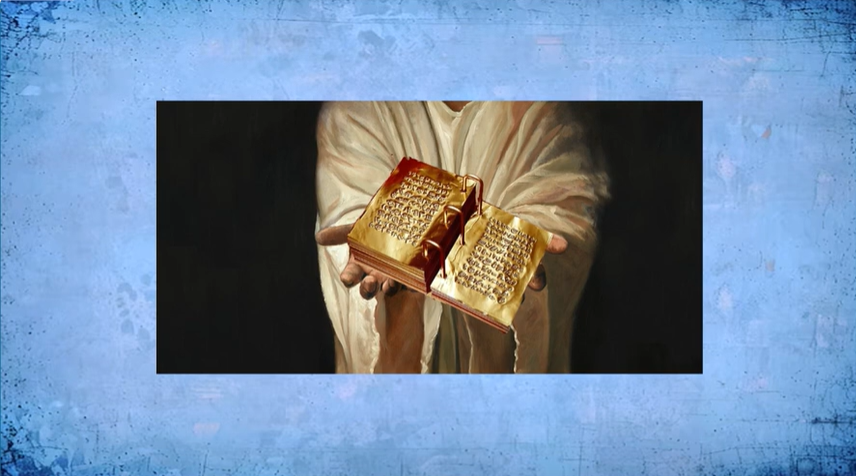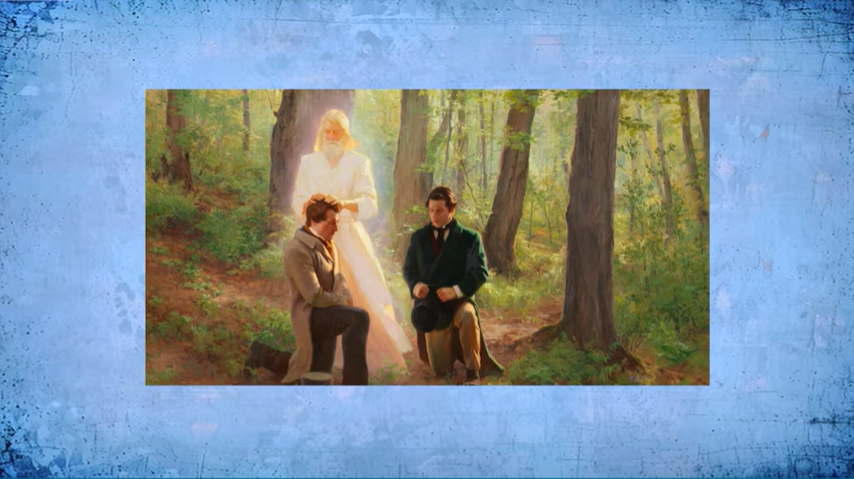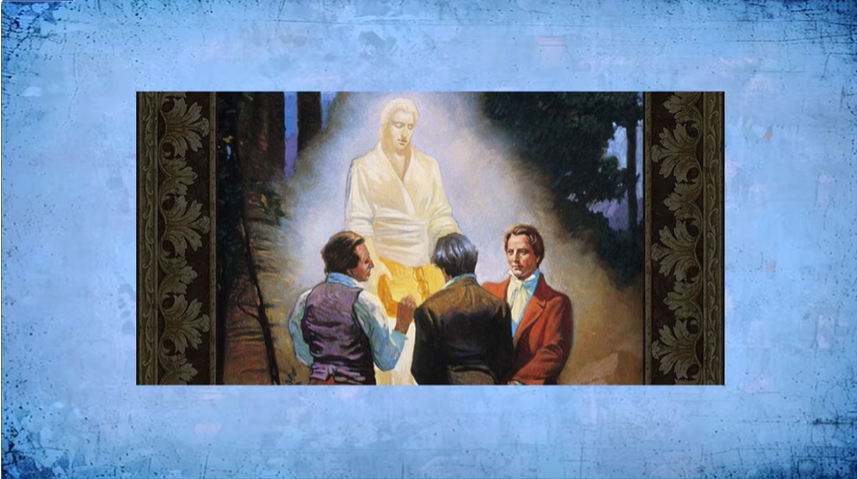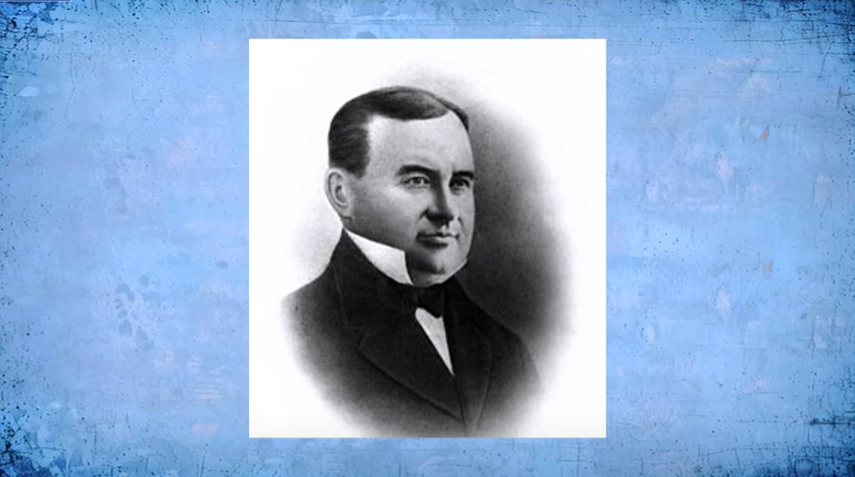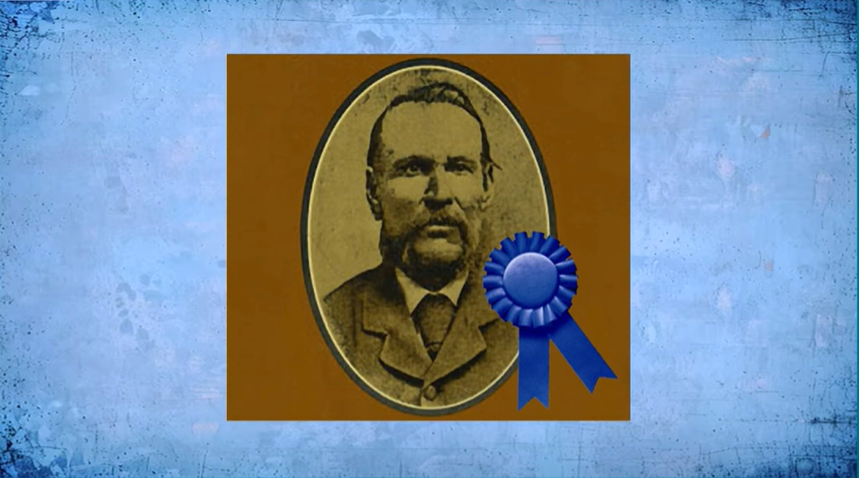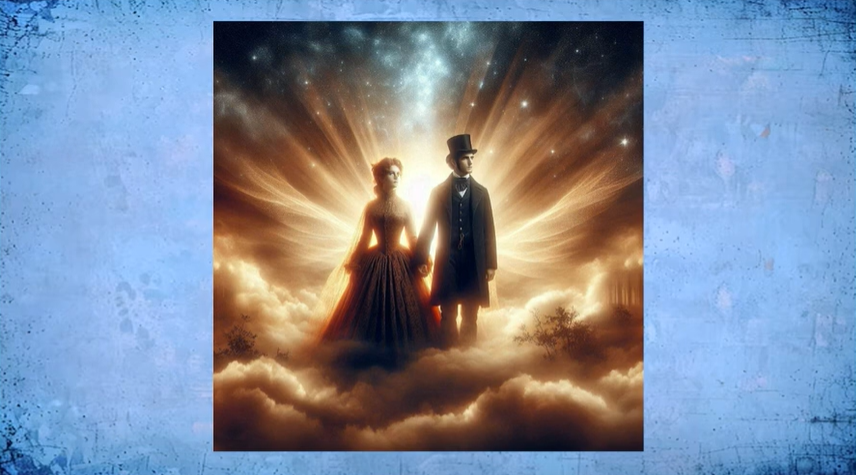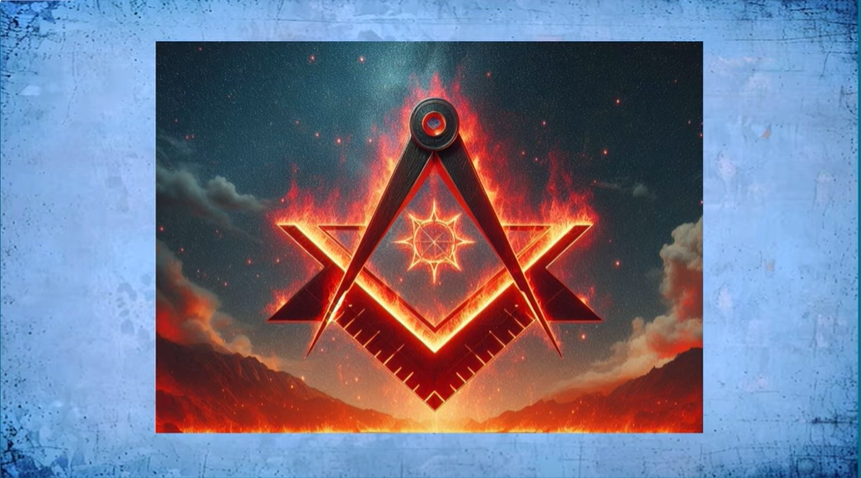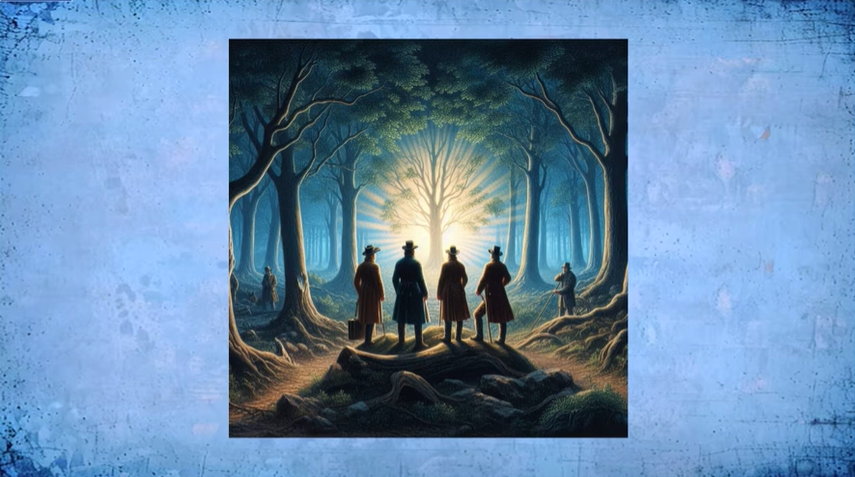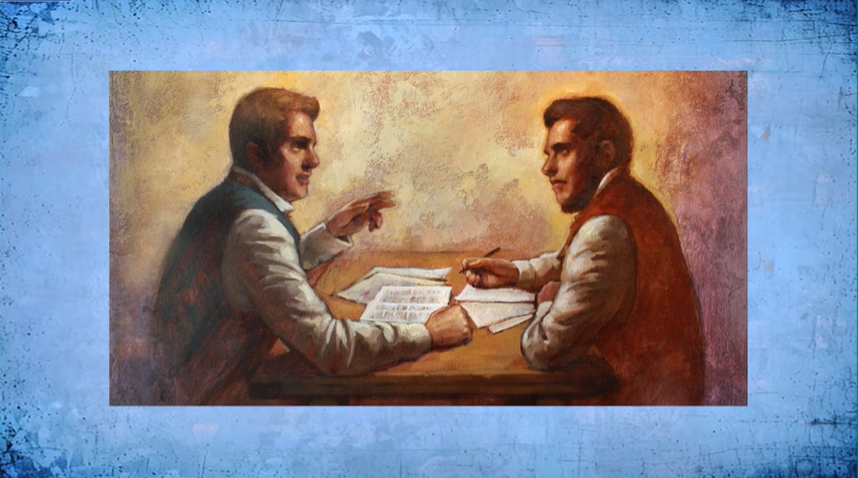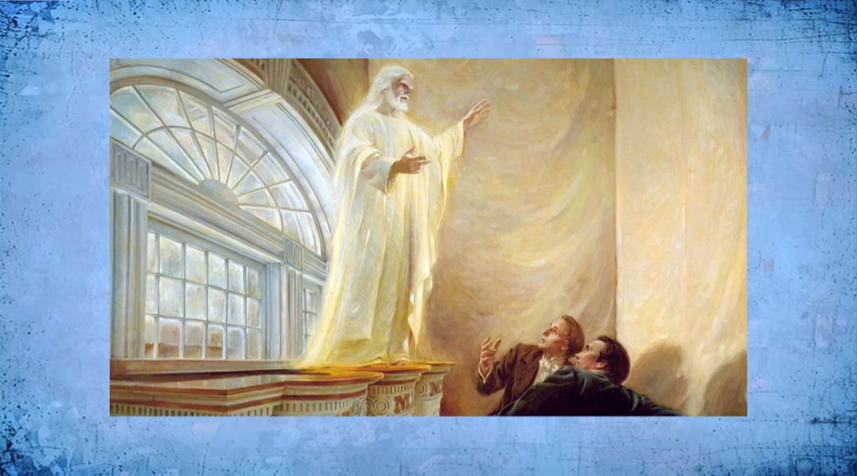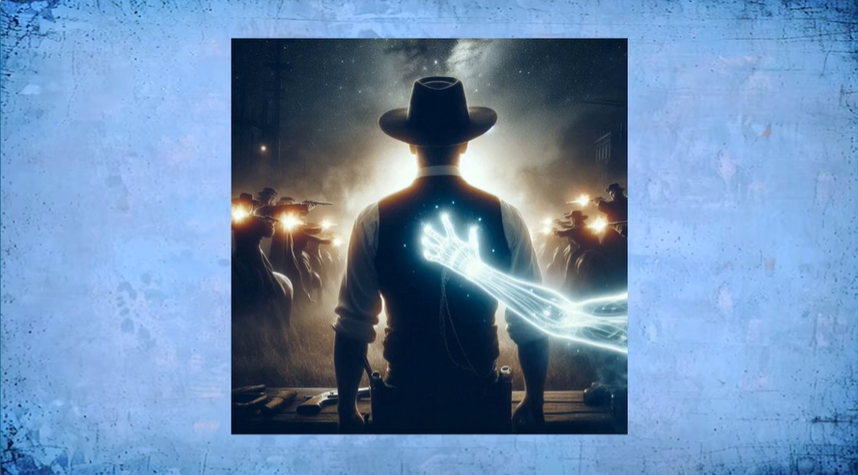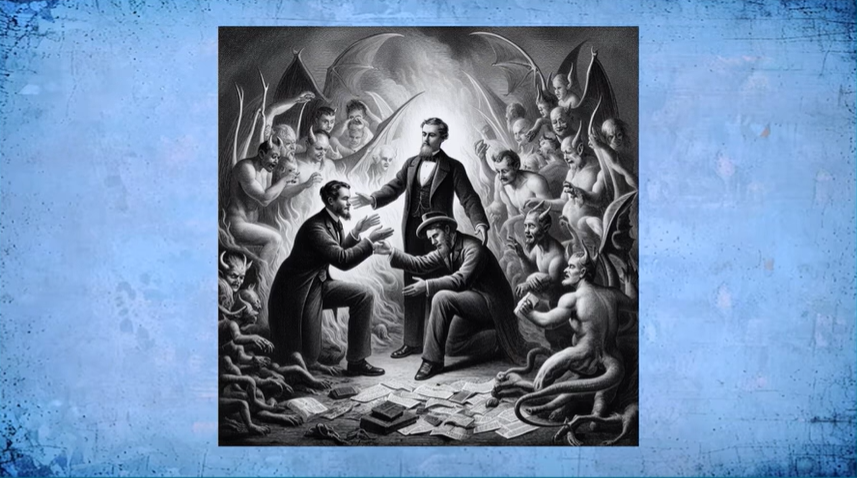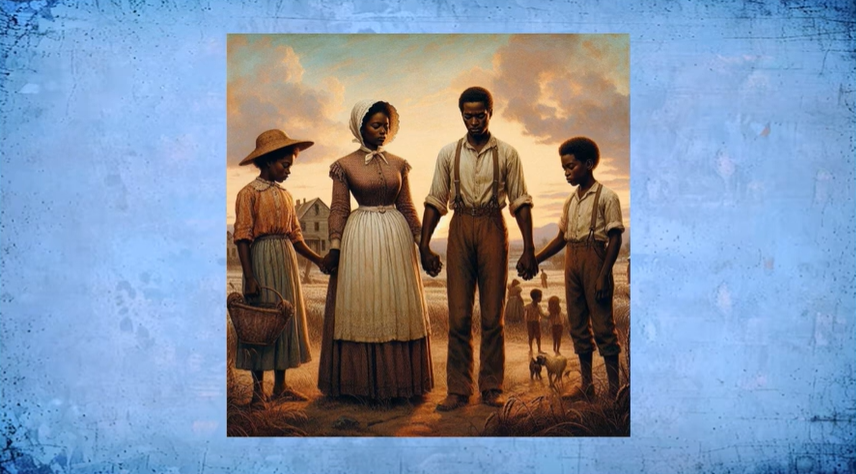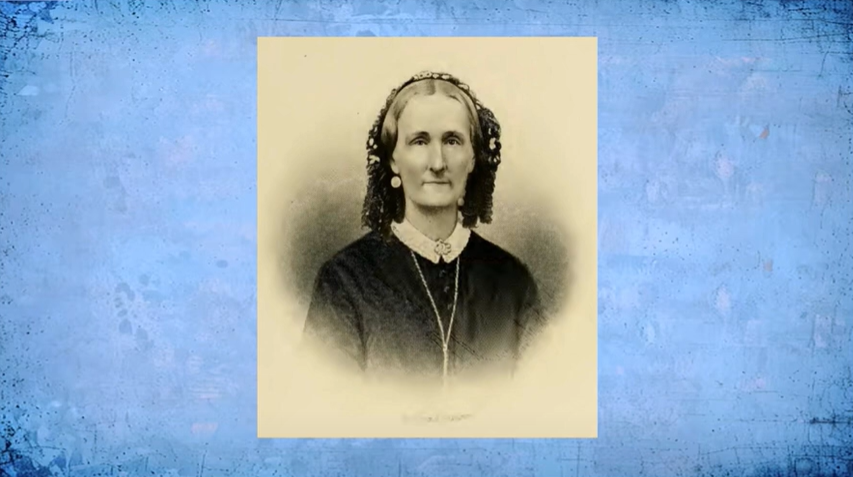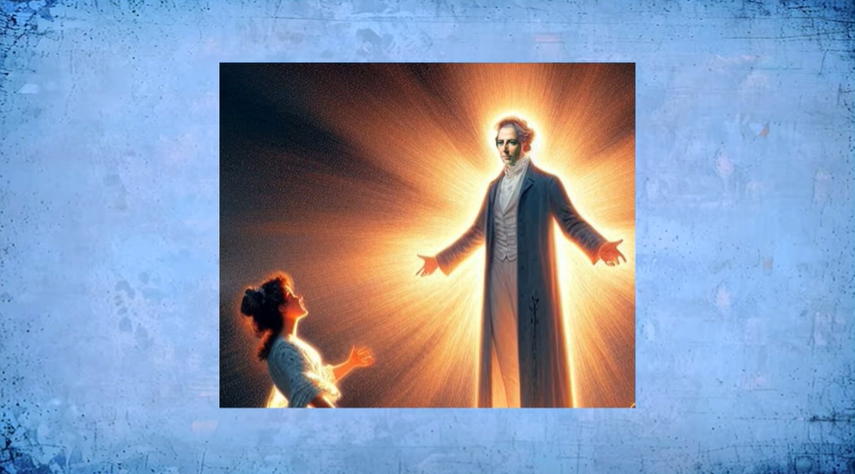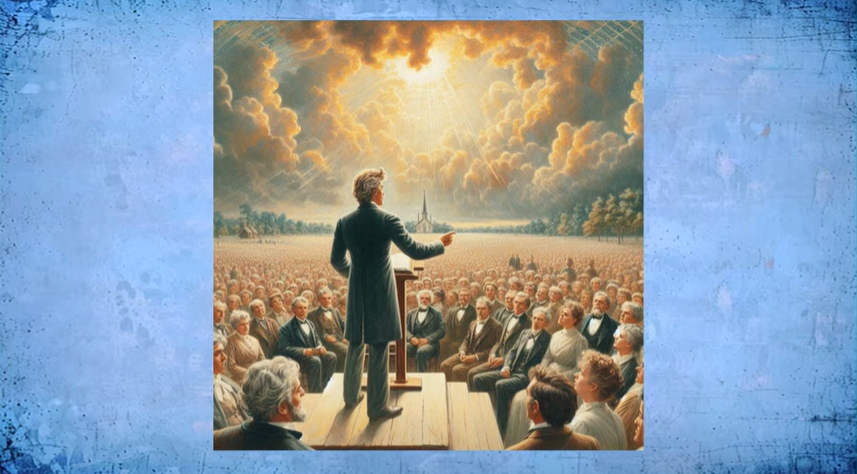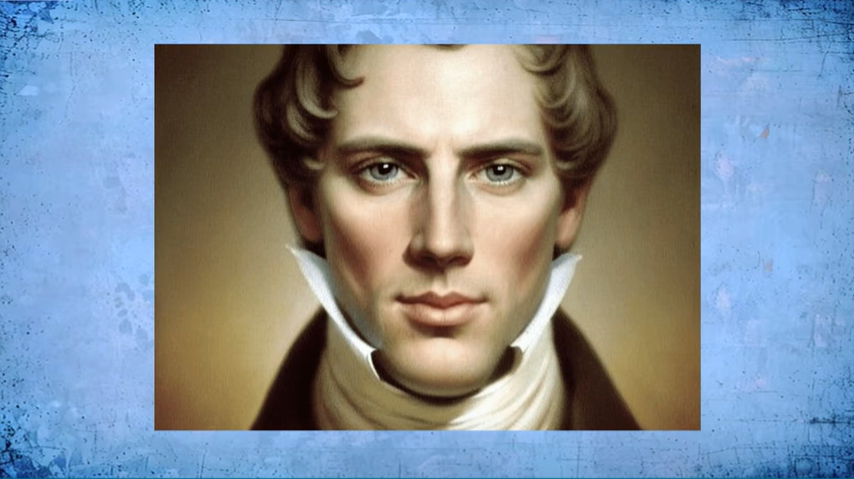Sarah Allen explores the numerous visions, dreams, and divine manifestations experienced by early Latter-day Saints, highlighting their collective testimonies of the Restoration of the gospel, the prophetic calling of Joseph Smith, and the divine truths of key doctrines such as priesthood authority, the authenticity of the Book of Mormon, and celestial marriage. These accounts underscore the widespread and consistent spiritual experiences that affirmed the Church’s divine origins and mission.
This talk was given at the 2024 FAIR Virtual Conference, “Understanding and Defending the History of the Church”, in American Fork, Utah on October 12, 2024.

Transcript
Sarah Allen
Introduction: The Prophet and His Visions
In the early years of the Restoration of the gospel of Jesus Christ, Joseph Smith Jr. experienced numerous visions of heavenly messengers, including at least twelve theophanies. Beginning in 1820 with the First Vision, in which he saw God the Father and the Savior, Joseph saw and interacted with a multitude of ancient prophets hailing from different dispensations, continents, and volumes of scripture.
He was not alone. Dr. Richard Lyman Bushman explained that, “In a peculiar form of democratic generosity, [Joseph] held out the expectation throughout his life that his followers could receive revelations or see the face of God as he did.” Sometimes these visions were shared with Joseph. On other occasions, prophetic dreams, visions, and intense spiritual experiences occurred privately for many early Latter-day Saints.
A comprehensive study on this topic would require a book-length treatment. By necessity, therefore, this paper is confined to a sampling of the many possible accounts that could be highlighted. Selected experiences are drawn from Joseph Smith’s family, friends, and social circle, focusing on events that happened shortly before his birth, during his lifetime, and immediately after his death.
Lucy Mack Smith’s Early Revelations
For the Smith family, divine manifestations began long before Joseph’s First Vision. In 1802, Lucy Mack Smith was near death while battling tuberculosis when she heard the voice of the Lord saying, “Seek, and ye shall find; knock, and it shall be opened unto you. Let your heart be comforted; ye believe in God, believe also in me.”
This experience renewed her interest in attending church, and once she was recovered from her illness, she began attending the local Methodist branch. The following year, her brother-in-law Jesse convinced her husband, Joseph Smith, Sr., to stop attending services with her and to request she not attend, either. Deeply troubled, she went to a cherry orchard to pray.
That evening, she dreamed of two trees standing by a river. One was encircled in gold and was pliant and flexible, bringing joy to the eye. The other tree was rigid and unbending. When she woke, the dream’s interpretation settled in her mind: the flexible tree was like her husband Joseph, while the fixed tree was like his brother, Jesse. She knew then that Jesse would never join the Lord’s church, but that her husband one day would.
Joseph Smith Sr.’s Prophetic Dreams
In 1811, Joseph Sr. (commonly called Father Smith) began having dreams of his own. In the first dream, he found himself in an open, barren field, filled with nothing in any direction but dead, fallen trees. A spirit guide told him that it was the state of the world without the Lord’s true religion. He was told to travel on, where he would find a box by the wayside. If he ate the food inside this box, he would receive wisdom and understanding.
Upon following the guide’s directions, he located the box and tried to eat its contents. At that moment, roaring, threatening animals appeared all around, preventing him from eating. He was forced to drop the box and run.
Father Smith’s Dream of a Tree
Several months later, he had another dream more familiar to Latter-day Saints. He again seemed to be in a desolate field. His spirit guide encouraged him to move forward, where he came to a narrow path. Upon entering it, he saw a stream running through a green valley, in which there was a large, beautiful tree bearing white fruit. He approached and began to eat the fruit, but wanted to share it with his family. He left to bring them to the field, and when they returned, they all ate together.
Father Smith saw a large building opposite the valley, filled with scornful onlookers. The guide reappeared, and told him to bring the rest of his family, two small children that Father Smith did not yet know. He brought them to join the rest of the family, and they all continued to eat. The guide explained that the fruit was the love of God, while the spacious building was Babylon, which would surely fall. This dream is well-known for its similarities to Lehi’s dream from the Book of Mormon.
The Continuation of Joseph Smith Sr.’s Dreams
Around 1819 or 1820, Joseph Sr. had five more dreams. Two were not recorded, but the other three were.
A Dream of Healing
In the first dream, he was incredibly ill and could barely walk. He told his spirit guide he could go no farther, at which time the guide directed him to a garden with a large gate and explained that inside, he would be healed. He limped to the gate and entered the garden, which was filled with flowers. Along the walkway were seats with large wooden images the size of men on them, six on each side of the path. As he passed each image, it bowed to him. When he had passed the final image, he was healed. When he asked for the meaning of the dream, he awoke before he received an answer.
A Dream of Judgement Day
In the next dream, it was Judgment Day, and he was traveling alone to a meeting with God the Father. When he arrived at the meetinghouse, he saw a large, anxious crowd moving toward the door of the building. When he finally reached the door, it was shut. When he knocked, he was told he’d arrived too late. His flesh then began to wither on his bones, and in despair, he cried out to God to forgive his sins. He began to heal, and the sentry told him he would have to plead his case before the Savior, the Great Mediator.
In his final dream, he met a peddler carrying a pack. The peddler explained that he’d now visited and traded wares with Father Smith seven times, and this would be the final time. There was only one thing left that Father Smith needed in order to secure his salvation, and he would write it down for him. In Father Smith’s haste to get some paper, he managed to wake himself up, never learning what he still needed. Shortly after this incident, his son, Joseph Smith, Jr., experienced his First Vision.
There was one more recorded vision for Father Smith. Upon his death, his last words were reportedly, “I see Alvin,” his deceased eldest son who had come to welcome him home. Of Alvin, Joseph Smith, Jr., also recorded that, “when he died the angel of the Lord visited him in his last moments.”
Visions in the Young Family
Lorenzo Dow Young’s Early Dream
Switching to another prominent Latter-day Saint family, as a child in 1816, Lorenzo Dow Young, brother of Brigham, had a dream in which he saw a road leading up into the sky. A golden carriage drawn by white horses came down the road and stopped in front of him. The Savior was inside, and He asked where Brigham was. Lorenzo answered, and the Savior inquired about his other brothers and his father. The boy answered again, and the Savior explained that He wanted all of them in His kingdom, but especially Brigham. The carriage then turned around and went back the way it came.
Heavenly Beings at the Bedside
Later, as a young man, Lorenzo became ill and was confined to his bed. One day, he heard beautiful singing, and looked at the foot of the bed, where, standing side by side, were two seraph-like beings about the size of 8-year-old children. They were dressed in white and appeared to him to be quite pure and heavenly. The other occupants of the room later confirmed they had not heard or seen anything.
A Vision of the Spirit World
In 1826, he had another dream or vision in which he died and was removed from his body and caught up into the spirit world, led by a guide dressed in white. He saw multitudes of people, all waiting anxiously for something important to happen. The guide explained that those souls had not yet arrived at their final destination.
The guide then led him to another group of people, the damned. These souls looked desperately miserable, and it was clear to Lorenzo that they were aware that they had no one to blame for their condition but themselves, because they rejected the means of their salvation.
He was then led to an incredibly beautiful city, and then an even higher, more glorious place. There was a stunning mansion, “clothed with fire and intense light.” The guide explained that it was where God dwelled. Retreating, they met his deceased mother and sister, and Lorenzo stayed a short time with them.
Finally, the guide told him he had to return. He wanted to stay, but the guide explained that his visit was only temporary and he had to go back to Earth until the time was right. But, the guide explained, he would be allowed to return one day if he continued to testify of the sacrifice and Resurrection of the Savior.
Heber C. Kimball’s Vision of Soldiers
The night of September 21, 1827––the same night Joseph Smith received the golden plates that would eventually be translated into the Book of Mormon––Heber C. Kimball saw what looked to be white smoke rising toward the heavens. It formed into a belt, then into a bow as it stretched across the horizon. Once in the shape of a bow, it widened and turned a transparent blue shade.
An army battalion, standing twelve men across and arranged in platoons, began to march across the sky until the entire bow was crowded with soldiers. He could see muskets, bayonets, and knapsacks held by the men, and the swords of officers. They wore caps with feathers like those worn by American soldiers in the War of 1812, and he could hear the footsteps and the sound of their equipment jangling as they marched. When they reached the far edge of the horizon, a battle commenced in the sky. Heber, with his family and neighbors, watched this scene for hours. Brigham Young is reported to have witnessed the same event several miles away.
Visions Surrounding the Translation of the Book of Mormon
Shortly after receiving the plates, Joseph saw through the Urim and Thummim that Martin Harris would assist him with the translation of the plates. His mother Lucy approached Martin’s wife, also named Lucy, to see if they’d be able to convince them to help. Lucy Harris was intrigued and pledged financial assistance for the work. When Joseph refused to show her the golden plates, however, she withdrew her support.
That night, she had a dream in which an angel showed her the plates and rebuked her for not being willing to support a servant of the Lord. She then gave Joseph $28 of her own money to assist in the translation.
In his 1832 history, Joseph recalled Martin receiving a vision of the Savior, who “shewed unto him his marvilous work which he was about to do and he imediately came to Suquehannah and said the Lord had shown him that he must go to new York City with some of the characters….”
In that same account, Joseph explained that when Oliver Cowdery introduced himself the following Spring, on April 5th, he arrived with a striking story. According to Joseph, the Lord “appeared unto a young man by the name of Oliver Cowdery and shewed unto him the plates in a vision and also the truth of the work and what the Lord was about to do through me his unworthy Servant therefore he was desiorous to come and write for me to translate….”
Restoration of the Priesthood
On May 15th, Oliver and Joseph were visited by John the Baptist, who ordained them to the Aaronic Priesthood. They then baptized each other in the Susquehanna River. Later that May or early June–– the exact date is unknown––they were visited by Peter, James, and John, and ordained to the Melchizedek Priesthood.
Oliver wrote to his friend, David Whitmer, for help due to mounting persecution. David agreed to bring them back to the Whitmer farm, but could not leave until the fields were plowed. Overnight, between five and seven acres of their fields were already plowed. Upon seeing it, Father Whitmer told David that he should leave for Harmony as soon as the rest of the field was plowed because there was “an overruling hand in this” miracle.
Lucy Mack Smith later recorded that three strangers were seeing working on the field, who never explained who they were or why they were working a stranger’s fields. It is unknown whether they were angels or transfigured beings, or simply strangers impressed by the Spirit to assist the work.
Once David arrived in Harmony to move Joseph and Oliver back to his family’s farm in Fayette, New York, more visions occurred. While riding in a wagon, David, Joseph, and Oliver saw a man walking with a knapsack. This figure said he was going to Cumorah, and Joseph confirmed he was a Nephite carrying the golden plates in his pack. Some accounts name this figure as Moroni, while one secondhand account labels him as Nephi. This same figure also appeared to David’s mother, Mary, and showed her the plates.
David also recounted a time shortly before Joseph asked him to be one of the Three Witnesses. He was plowing in his field when he saw a personage and heard a voice saying, “Blessed is the name of the Lord and they who keep his commandments.”
In the Whitmer home, Sally Conrad was an 18-year-old servant working during the time of the Book of Mormon translation. Sally recounted how Joseph and Oliver would go upstairs to the second floor room where they would translate, and that they would come back downstairs looking “so exceedingly white and strange” that it disturbed her. She asked Mary Whitmer what they were doing to cause such a reaction, but the Whitmers would only say that it was a sacred, holy work they were doing.
Eventually, after witnessing this phenomenon repeatedly, Sally threatened to quit if she was not told the truth. Mary finally explained the translation work, and that “the power of God was so great in the room that they could hardly endure it; at times angels were in the room in their glory, which nearly consumed them.” Sally eventually joined the Church and remained a faithful member all her life.
Hiram Page, one of the Eight Witnesses, was once walking through a field when angels appeared to him, to “confirm [him] in the work of the Lord of the last days––three of whom came to [him] afterwards and sang an hymn in their own pure language.”
Famously, the Three Witnesses, David Whitmer, Martin Harris, and Oliver Cowdery, alongside Joseph Smith, heard the voice of the Lord and saw an angel who showed them the golden plates, the sword of Laban, the Liahona, and the Nephite Interpreters, or Urim and Thummim. The experience happened first for Joseph, Oliver, and David, as they were unable to receive the vision in Martin’s presence. Martin retreated to repent and pray, and the three men received their vision. Joseph then went to locate Martin and prayed with him, and Martin received the same vision.
During the summer of 1829, Stephen S. Harding, future governor of Utah and strong critic of the Church, passed through Palmyra and stayed for a visit. He had lived in the town previously, and was catching up with old acquaintances. He had heard stories of the so-called “Golden Bible” and was curious, so he discussed the matter with his cousin, Pomeroy Tucker, and Tucker’s employer, E.B. Grandin, the printer of the Book of Mormon.
Martin Harris, Oliver Cowdery, Joseph Smith, and his father arrived at the print shop. They invited him home with them, where he stayed overnight with the Smith family. They read to him parts of the Book of Mormon manuscript, and according to him, Lucy told him not to be afraid if he had dreams or visions that night. From the phrasing of the account, it seems as though it was an expected occurrence for anybody staying in their guestroom. It appears to have been the same room where Lucy Harris had her dream of the Savior and the plates, for example.
The following morning, Harding pretended to have had a dream, but would not share the details of it. Later during his stay in Palmyra, Martin tried again to get the details from him, and he pretended to have seen a scroll with characters written on it. He wrote some of them out, and according to Harding, Martin claimed they looked just like the characters from the golden plates.
This account was told to mock the figures involved and features some crude caricatures of them, so it is not clear how much––if any––of the account is true. It is quite interesting, however, that the Smith family seemed to expect that visitors would receive dreams or visions while in their home.
Harding also claimed that Martin Harris told him that, in between leaving the Smith home and reconnecting with him, Martin had seen “fearful signs in the heavens.” Martin was allegedly standing alone one evening and saw a fiery sword come down from heaven, pointing to the east, then the west, then north, then south, and finally, to the Hill Cumorah where the plates were found. As with the previous account, it is unclear whether there is any truth to this claim.
The following year, a man named Solomon Chamberlain met the Smith family and some of the Whitmers and relayed to them a vision he’d had some fourteen years earlier. He said, “The Lord showed me in a vision that there were no people on the earth that were right, and that faith was gone from the earth, excepting a few, and that all churches were corrupt.” He also saw that a church would be raised up after the apostolic order, with the same power and gifts that were present in the days of Christ, and that he would live to see that day. He also said that a book would come forth like the Bible, and that people would be guided by it.
The Spirit had told him to get off a boat as it passed Palmyra, though he was on his way to Canada. The Spirit then guided him directly to the Smith home. The family then explained to him about the Book of Mormon and Joseph’s visions. Solomon then said that the Lord “revealed to [him] by the gift and power of the Holy Ghost that this was the work [he] had been looking for.” He joined the Church shortly afterward.
In April of 1830, Newel Knight’s body was seized by an evil force that left him unable to speak, and which thrashed his body around into wild contortions. When Joseph took his hand, he was able to speak. He requested Joseph cast out the devil that was possessing him. In front of approximately 8–10 witnesses, Joseph said, “If you know that I can, it shall be done.” He then commanded the devil “in the name of Jesus Christ” to depart from Newel, who later recounted seeing the devil leave his body and vanish.
After the demon’s departure, Newel’s “countenance became natural, his distortions of body ceased, and almost immediately the Spirit of God descended upon him, to such a degree that the visions of eternity were opened to his view and he beheld great and glorious things.”
Of that vision, Newel explained, “I now began to feel a most pleasing sensation resting upon me, and immediately the visions of heaven were opened to my view. I felt myself attracted upward and remained for some time enwrapped in contemplation insomuch that I knew not what was going on in the room. By and by I felt some weight pressing upon my shoulder and the side of my head; which served to recall me to a sense of my situation, and I found that the Spirit of the Lord had actually caught me up off the floor, and that my shoulder and head were pressing against the beams.”
Later, during Joseph’s 1830 trials in Bainbridge and Colesville that July, Newel testified that the devil cast out of him had a body of light and that “an angel of light or some holy being direct from heaven” told him who the devil was. This incident may also have been referenced in D&C 128:20, where it describes “the voice of Michael on the banks of the Susquehanna River, detecting the devil when he appeared as an angel of light!”
During the first conference of the Church, held at the Whitmer home in Fayette, New York, Newel again had a vision. He said, “I saw the heavens opened, I beheld the Lord Jesus Christ seated at the right hand of the Majesty on High.”
At some point that same year, Newell K. and Elizabeth Whitney were searching for a church that taught the doctrines of the Bible, manifested spiritual gifts, and claimed authority to give the gift of the Holy Ghost. One night, as they prayed, “the Spirit rested upon [them] and a cloud overshadowed the house. It was though [they] were out of doors. The house passed away from [their] vision. [They] were not conscious of anything but the presence of the spirit and the cloud that was over [them]. [They] were wrapped in the cloud. A solemn awe pervaded [them]. [They] saw the cloud and felt the Spirit of the Lord. Then [they] heard a voice out of the cloud, saying, ‘Prepare to receive the word of the Lord, for it is coming.’ At this, [they] marveled greatly, but from that moment [they] knew that the word of the Lord was coming to Kirtland.”
Only a few short months later, a carriage stopped in front of Newell’s store and Joseph Smith jumped out, calling Newell by name and declaring that he was the prophet Newell had prayed for.
In September 1830, Parley P. Pratt was walking home one evening and pondering the Book of Mormon, as well as the Second Coming of the Savior. Suddenly, he was surrounded by a brilliant light. He looked up to see its source, and saw a long chain of deep, fiery red light extended across the sky.
After holding straight for a short time, it began to bend in the center, the two ends coming together to form the square sign of the temple. It held in place for approximately one minute, then morphed into the compass sign. Again, it held its shape for a short time, and then doubled in on itself like a chain, or a closed compass.
Eventually, it faded away, and Parley fell to his knees to pray. These signs would, of course, come to hold great significance for Latter-day Saints within just a few short years.
In the autumn of 1831, Brigham Young, Heber C. Kimball, and other members of the Young family enjoyed a religious gathering taught by some Latter-day Saint missionaries.
After the meeting, Brigham, his father, his brother Joseph, and Heber were gathering wood in a grove and pondering over the things the missionaries had taught. Heber recorded that “the glory of the God shone upon us, and we saw the gathering of the saints to Zion, and the glory that would rest upon them; and many more things connected with that great event.”
The men were so joyful at what they saw that, Heber continued, they “were hardly able to contain [themselves], and [they] did should aloud ‘Hosannah to God and the Lamb.’” Heber and Brigham were baptized only a few months later.
A man named Daniel Tyler recounted that in 1823, his father determined that there was no true church left in the world. Daniel’s grandfather agreed, but prophesied that after his death, his son would live to see the true church organized with all of the apostolic gifts and blessings.
Eventually, Daniel’s grandfather died, and in 1832, Samuel Smith and Orson Hyde were in that area, preaching. Daniel’s parents were skeptical, but Daniel was baptized. Shortly thereafter, his grandfather appeared in a dream to Daniel’s father, testifying that this was the church he had prophesied of before his death. Daniel’s parents were then baptized as well.
Recorded in what is now Doctrine and Covenants 76, Sidney Rigdon shared an experience with Joseph in which “eternity [was] sketch’d in a vision” for them by the Savior. It occurred on February 16, 1832 as they were working on the Joseph Smith Translation of the Gospel of John. At least a dozen other people were in the room, according to Philo Dibble, who said he could see the glory of the vision and feel its power, but could not see what Joseph and Sidney saw. Together, they beheld the degrees of glory, the premortal life, worlds without number populated by other children of God, and the Sons of Perdition, who would receive no glory in the life to come. This vision fundamentally changed our understanding of the Plan of Salvation and what the kingdom of God truly looks like.
In June 1833, Sidney, Joseph, and Frederick G. Williams received a vision of the plans for the Kirtland temple, fulfilling a promise given in what is now D&C 95:14.
Zebedee Coltrin reported that in mid-April 1834, he, Joseph Smith, and Oliver Cowdery had a vision of Adam and Eve. In a late, thirdhand account, Abraham H. Cannon reported that Zebedee also had a vision with Joseph Smith and Sidney Rigdon of the Father, the Son, and Heavenly Mother. They laid down beside one another in the woods, and the heavens opened up to them. It is unclear whether these were separate visions, different portions of the same vision, or whether Abraham Cannon was mistaken on the details while describing the vision of Adam and Eve.
Zebedee had numerous further visions. When he was first introduced to the gospel by Solomon Hancock, he laid on his bed and pondered what he had heard. The room was filled with a brilliant light, and he saw multiple men dressed in white temple robes. On another occasion, Joseph Smith reported Zebedee seeing the Savior “extended before him, as upon the cross, and a little after, crowned with glory upon his head above the brightness of the sun.” At the School of the Prophets in Kirtland, he saw the Savior passing through the room, and then another personage “whose glory and brightness was so great, that [he] could liken it to nothing but the burning bush that Moses saw, and its power was so great that had it continued much longer [he] believe[d] that it would consume [them].” This second figure was later identified as being God the Father.
At another point, he saw the Lord’s hosts, and during the Kirtland temple dedication, he saw “the power of God as it was in the day of Pentecost and cloven tongues of fire [resting] on the brethren.” A late secondhand account also describes Zebedee and Joseph being visited daily by the Savior for the span of two weeks in Kirtland, teaching them the temple ordinances.
In late 1834, a wealthy convert named John Tanner was told in either a dream or a nighttime vision to dispose of his property and go immediately to Kirtland. He obeyed, selling off several farms and orchards, as well as a hotel, and packed his family into a wagon on Christmas day to begin the long journey. When he arrived in January, he discovered that the mortgage on the temple was due and Joseph and other Church leaders had been praying for assistance. John immediately loaned Joseph $2,000, the temple committee $13,000, provided another $30,000 to purchase supplies, and made additional “liberal donations” toward building the temple.
In Kirtland, visions were prolific. According to one historian, “The Savior appeared in five different meetings held in the temple. Visions, including a vision of the Father and Son, were beheld at eight meetings, and the congregation saw heavenly beings or angels in nine meetings. In other sessions many Saints reported that they experienced such manifestations as the gift of tongues, the sounds of a mighty wind, a pillar of fire resting down upon the temple roof, prophesying, and the voices of angels. Over one thousand people attended these meetings, many of whom testified to having had sacred experiences and put their observations and feelings in letters and journals.” Because it would not be possible to recite them all in this paper, I will include a brief sampling.
In a meeting on January 28, 1836, “President Sylvester Smith saw a pillar of fire rest down and abide upon the heads of the quorum, as we stood in the midst of the Twelve. … Roger Orton saw a mighty angel riding upon a horse of fire, with a flaming sword in his hand, followed by five others, encircle the house, and protect the Saints, even the Lord’s anointed from the power of Satan and a host of evil spirits, which were striving to disturb the Saints. President William Smith, one of the Twelve, saw the heavens opened, and the Lord’s host protecting the Lord’s anointed.”
Of this same meeting, Harrison Burgess recounted, “I beheld the room lighted up with a peculiar light such as I had never seen before. It was soft and clear and the room looked to me as though it had neither roof nor floor to the building, and I beheld the Prophet Joseph and Hyrum Smith and Roger Orton enveloped in the light: Joseph exclaimed aloud, ‘I behold the Savior, the Son of God.’ Hyrum said, ‘I behold the angels of heaven.’ Brother Orton exclaimed, ‘I behold the chariots of Israel.’” He later added that Joseph had also seen God the Father at that meeting.
As well, David Patten told Abraham Smoot that angels, the Savior, and God the Father were present at that meeting.
In late March shortly before the temple was dedicated, Benjamin Brown wrote a letter to his wife in which he described Joseph Smith, Sr. giving a blessing to a man, indicating that he would receive a sign whether to stay in Kirtland or go home to Niagara County. Within two hours, he saw a great light extended across the sky over the temple, but the sky over where his home was located was dark. The man took that as a sign to stay in Kirtland for the time being.
Benjamin continued, “Some have seen the heavens opened and seen the Savior. Others have seen angels on the four corners of the house of the Lord with drawn swords, and also stood thick on the ridge, Elisha with his chariot of fire.” He added that some had seen Adam, Peter, James, and John, the highway cast up, the ten tribes returning in chariots as far as the eye could extend, and some saw the redemption of Zion. Others saw cloven tongues of fire resting on individuals. One saw a pillow or cloud rest on the temple, shining like gold. Two saw three personages hovering in the room, holding bright keys and a chain in their hands. He also recounted that some had seen a golden light illuminating the temple, while one man saw two rows of angels filling the room.
At the temple dedication on March 27, 1836, Frederick G. Williams reported that an angel came into the room and sat between him and Joseph Smith, Sr. In four later accounts, this angel was identified as the Savior.
On April 3, 1836, Oliver Cowdery and Joseph Smith shared a vision in which the Savior, Moses, Elias, and Elijah appeared to them (D&C 110). Additionally, Oliver recorded, “The Spirit was poured out––I saw the glory of God, like a great cloud, come down and rest upon the house, and fill the same like a mighty rushing wind. I also saw cloven tongues, like as of fire, rest upon many … while they spake with other tongues and prophesied.”
At one point, Zina Huntington and her sister Presendia saw angels clothed in white walking across the top of the Kirtland temple, covering the roof from end to end. On another occasion, they both heard “from one corner of the room above [their] heads, a choir of angels singing most beautifully. They were invisible to [the girls], but myriads of angelic voices seemed to be united in singing some song of Zion, and their sweet harmony filled the temple of God.”
Presendia and Eliza R. Snow both heard the sound of a rushing wind during one meeting after Joseph Smith, Sr. prayed that the congregation would experience it. Humorously, in Eliza’s account, Father Smith seemed to forget that he had prayed for such a thing, and exclaimed in shock, “What! Is the house on fire?”
In 1836, Lorenzo Dow Young was away from home on business when he had a dream that his young daughter’s dress caught on fire and burned her to death. He started to return home but talked himself out of it, convinced it was just a nightmare rather than a warning. Tragically, after concluding his business two weeks later, he received word while on his return journey that the nightmare had become reality. His little girl, Lucy Ann, had been killed in the exact way he had dreamed during his absence.
During the Battle of Crooked River, Lorenzo was trying to ward off an attack and was backed against a steep drop-off at the river. He was miraculously saved from death by a brilliantly white hand running down the neck and back of his opponent, which paralyzed the man long enough for Lorenzo to strike him with the butt of his gun, destroying the weapon. The man dropped his sword, which Lorenzo was able to grab and use to defend himself.
In 1837, while on a mission to England, Heber C. Kimball, Orson Hyde, Isaac Russell, and Willard Richards had a terrifying encounter. One Saturday night, Isaac burst into the room where Heber and Orson were sleeping, begging them to help him cast out the demons that were plaguing him. Heber was initially skeptical, but after more pleading, he and Orson laid their hands on Isaac’s head and began to pray, rebuking the evil spirits. Heber was then physically struck on the head and fell to the floor. In one account, he described it as feeling like a gunshot. Orson and Willard then gave Heber a blessing and got him back into his bed.
Then, either that same night or the following night after a second attack on Isaac, Heber and Orson had a vision wherein the veil was peeled back and they were able to see the hosts of the Devil, swarming around them and gnashing their teeth. When Joseph Smith later learned of this experience, he was overjoyed because it meant that the gospel was taking root in England.
When she was approximately 15 or 16 years old and living in Connecticut, Jane Manning had a vision of Joseph Smith, and knew from that moment that he was a prophet. She had her family began to travel to Nauvoo not long afterward.
After unscrupulous guides demanded to be paid early and then refused to take them the rest of the way they’d paid for, the Mannings were forced to walk approximately 800 miles to reach their destination. Their shoes wore out and their feet cracked and bled from the exertion, forcing them to stop. They knelt and prayed as a family for their feet to be healed so that they could continue their journey, and “[their] prayers were answered and [their] feet were healed forthwith.”
In 1841, Heber C. Kimball was commanded to enter into a plural marriage, but to keep it secret for a time from his wife, Vilate. He knew the doctrine was true, but was so upset over it that he made himself physically ill. He would pace the floor, wringing his hands and crying, wishing desperately he could just tell Vilate what was going on. He prayed constantly that she would discover it on her own, without his breaking his covenant to keep it secret.
Vilate was deeply concerned, wondering what was causing such distress in her husband. She begged him to tell her, but he continually refused. Finally, she retired to her room alone one evening and, distraught, poured out her heart to God. In response, “the vision of her mind was opened, and she saw the principle of Celestial Marriage illustrated in all its beauty and glory, together with the great exaltation and honor it would confer upon her in that immortal and celestial sphere if she would but accept it and stand in her place by her husband’s side. She was also shown the woman he had taken to wife, and contemplated with joy the vast and boundless love and union which this order would bring about, as well as the increase of kingdoms, power, and glory extending throughout the eternities, worlds without end.”
When Margaret Cooper West first learned of the doctrine, she refused to believe it unless she heard the truth directly from an angel. As she passed through the garden gate to visit her brother-in-law with her husband, “all creation was opened in vision to [her] view… Then [she] saw plurality of wives, the celestial order of marriage, open to [her] view, and knew it was right, and a virtuous principle, and pertaining to the everlasting Gospel of Jesus. Then [she] saw the authorities of the Church, and what they had suffered to establish this peculiar doctrine. It was a grand point in the Gospel, and had to be established in this generation; there was no getting around it, it had to come forth. … [She] realized the beauty and glory and exaltation connected with this heavenly principle; it was grand and glorious, and [she] felt rapt in joy.”
Thomas Grover reported seeing one of his plural wives in a vision before ever seeing or meeting her, while James Allred heard the voice of God declaring it was a true principle, and Martha Coray had a dream revealing it to her before Hyrum Smith explained the doctrine to her and her husband.
Zina Huntington, one of Joseph’s plural wives, experienced dreams in her youth that she couldn’t explain. Of plural marriage, she testified, “I will tell you the facts. I had dreams––I am no dreamer, but I had dreams that I could not account for. I know this is the work of the Lord; it was revealed to me, even when young. Things were presented to my mind that I could not account for. When Joseph Smith revealed this order, I knew what it meant; the Lord was preparing my mind to receive it.”
Sarah Studevant Leavitt described in her autobiography of the night when she and her husband learned of plural marriage. She lay in bed, pondering what it might mean if it were true, and asking God if she would have to share her husband with another woman. The answer that came was “No,” but then something even more remarkable happened. She recalled, “And then my mind was carried away from the earth and I had a view of the order of the celestial kingdom. I saw that was the order there and oh, how beautiful. I was filled with love and joy that was unspeakable.”
When Elizabeth and Newell K. Whitney prayed together over the subject, Elizabeth recounted, “We pondered upon the matter continually, and our prayers were unceasing that the Lord would grant us some special manifestation concerning this new and strange doctrine. The Lord was very merciful to us; He revealed unto us His power and glory. We were seemingly wrapt in a heavenly vision, a halo of light encircled us, and were convinced in our own bosoms that God heard and approved our prayers and intercedings before him. Our hearts were comforted and our faith made so perfect that we were willing to give our eldest daughter, then seventeen years of age, to Joseph, in the order of plural marriage.”
Mary Elizabeth Rollins Lightner, dreamed that she was married to Joseph Smith, but did not understand what it meant until he and Brigham Young revealed the doctrine to her the following day. Upset, she left. Brigham later assured her that if she prayed over the matter, an angel had promised Joseph that she would receive confirmation of the doctrine.
After praying over the matter for a time, she saw an angel herself, but hid under the covers in fright until he left without delivering his message. When she saw Joseph several days later, he asked if she had received her answer yet, and she said no. He assured her she soon would, because the angel promised him that she would. She told him then what had happened, and he explained that if she would have prayed, her fear would have left her and the angel could have taught her many things. He then prophesied of events that would happen in her life. When they came true “to the letter,” she realized that the doctrine was true.
Lucy Walker, another of Joseph’s wives, also had a remarkable experience affirming the doctrine of celestial marriage. When Joseph first approached her with the teaching, she became upset. He told her that she was entitled to receive an answer of her own over the matter, and encouraged her to pray to receive one. In one account, she explains that when she prayed over the matter, she “thereupon received from [the Lord] a powerful and irresistible testimony of the truthfulness and divinity of plural marriage, which testimony has abided with [her] ever since.”
In another interview, she gave more detail, explaining that she had stewed over the issue for months, possibly for more than a year, while living in Joseph’s home. He was upset for her, and she was equally upset, not knowing how to feel. Finally, he told her that if she prayed that evening, she would receive a “manifestation of the will of God concerning [her]; a testimony that [she] can never deny…that joy and peace that [she] never knew.” That night, as she prayed over the matter, her room “was lighted up by a heavenly influence.” She explained, “To me, it was, in comparison, like the brilliant sun bursting through the darkest cloud. The words of the Prophet were indeed fulfilled. My soul was filled with a calm, sweet peace that ‘I never knew.’ Supreme happiness took possession of me, and I received a powerful and irresistible testimony of the truth of plural marriage, which has been like an anchor to the soul through all the trials of life.” A secondhand account reports her as saying this revelation came from an angel of the Lord.
A third of Joseph’s plural wives, Desdemona Fullmer, also reported seeing an angel who confirmed the plural marriage doctrine to her. Desdemona also claimed to have a dream in which she was warned to flee the Smith home because if she didn’t, Emma would try to poison her. When she told Joseph of the dream, he allegedly confirmed that Emma would try if she could, so he helped Desdemona move into William Clayton’s home.
After the martyrdom, Eliza R. Snow was so engulfed with grief at the loss of her husband Joseph that she prayed to follow him into the next life as soon as possible. Joseph appeared at her bedside and told her that she should not pray for death because God had different plans for her.
He explained that his earthly work was finished, but that hers was not. Both he and the Lord wished for her to live for many more years and assist in carrying out the work that Joseph had been chosen to begin. She should have courage and be of good cheer, so she could lighten the burdens of others, and, rather than think of her own sorrow and loneliness, she should be of comfort to others in their grief.
Later that August, the Church went through its succession crisis as several individuals vied for control in the wake of the murders of Joseph and Hyrum. On his way back to Nauvoo to deal with the leadership question, Heber C. Kimball had a dream in which he saw a “natural-looking Joseph,” meaning that he saw Joseph as he looked in life, not as a glorified being. Joseph was preaching to a large congregation. When Heber awoke, he believed the dream was symbolic of the restored church that Joseph established while on earth. Joseph laid the foundations of the Restoration, and it was Heber’s job, along with the rest of the Twelve, to build on that foundation and continue spreading the gospel throughout the world.
Less than a week later, at a prayer meeting turned solemn assembly, both Sidney Rigdon and Brigham Young spoke to the Church membership. Sidney put himself forward as “guardian” of the Church and “spokesman” for Joseph Smith, while Brigham explained that the Quorum of the Twelve had the necessary priesthood keys to lead the Church.
In what has since become known as the “mantle experience” or the “transfiguration of Brigham Young,” members of the audience later claimed to either hear Joseph Smith’s voice or see his face while Brigham was speaking. Approximately 130 accounts testified of witnessing this phenomenon, though some accounts place the event in October. This suggests that it may have been an ongoing experience, with people witnessing the same events on different occasions. It is one of the best attested visions in human history, and to many, it was a divine signal that the Saints should follow Brigham, rather than Sidney, and the bulk of Church members supported the leadership of the Twelve going forward.
Many of the same figures highlighted in this paper later reported receiving additional visions and dreams. For example, Brigham Young saw the Salt Lake Valley in vision before arriving there, and he later reported visitations from heavenly figures, including Joseph Smith. Similarly, Wilford Woodruff recorded numerous dreams and revelations in his journals, including a well-known vision of the Founding Fathers requesting their temple work be done. Parley P. Pratt experienced revelatory dreams throughout his life. Lorenzo Snow saw the Savior in the Salt Lake temple. Joseph F. Smith had his famous vision of the spirit world. Many more such experiences could be cited. These later visions, however, are outside the scope of this paper and will not be discussed in further detail.
That so many different figures had similar experiences testifying of the Restoration of the gospel is telling. These were not the outlandish stories of one person craving attention or glory. It was not a form of mass hysteria, when these experiences spanned multiple decades and locations. It was not a grand conspiracy that hundreds of people were able to keep secret throughout their lives.
The fantastic claims of a single individual can be easily dismissed. Many critics therefore explain away the visions of Joseph Smith as lies or the hallucinations of someone suffering from mental illness. However, it becomes much more difficult to explain the similar experiences of dozens of different people, many of them only recorded in private journals and letters not meant for public consumption.
Most of these experiences testified of either Joseph’s calling as a prophet of God, Brigham Young’s calling as his successor, the restoration of the Church of Jesus Christ, the restoration of priesthood authority and long-forgotten doctrines, or the authenticity of the Book of Mormon. The sheer volume of eyewitness testimonies attesting to these events cannot be discounted or understated.
coming soon…
- Divine manifestations: The reality and consistency of visions, dreams, and spiritual experiences among early Latter-day Saints.
- Prophetic calling of Joseph Smith: Testimonies and experiences affirming Joseph Smith’s role as a prophet of God.
- Authenticity of the Book of Mormon: Witness accounts supporting the divine origin and translation of the Book of Mormon.
- Restoration of priesthood authority: Revelations and visitations affirming the restoration of both the Aaronic and Melchizedek Priesthoods.
- Doctrines of celestial marriage: Visions and spiritual confirmations of the principle of plural marriage and its eternal significance.
- Succession crisis after Joseph Smith’s martyrdom: Divine signs affirming Brigham Young’s leadership and the Twelve Apostles’ authority.
- Collective spiritual experiences: The significance of shared divine manifestations, such as the Kirtland Temple events and the “mantle experience.”
- Criticisms of visionary experiences: Responses to claims that these visions were lies, hallucinations, or fabrications.
- Consistency across time and geography: The alignment of spiritual experiences among various individuals in different locations over decades.
- Broader implications for the Restoration: The cumulative evidence provided by these accounts supporting the divine origins of the Church of Jesus Christ of Latter-day Saints.
Reality of Visions and Revelations
- Search questions:
- Were Joseph Smith’s visions real or fabricated?
- What evidence supports the reality of early Latter-day Saint spiritual experiences?
- Search questions:
Consistency of Eyewitness Accounts
- Search questions:
- How do multiple witnesses corroborate the authenticity of Joseph Smith’s visions?
- Why are so many early Latter-day Saints’ accounts consistent across decades?
- Search questions:
Divine Origin of the Book of Mormon
- Search questions:
- What evidence supports the divine translation of the Book of Mormon?
- Did non-members or skeptics report spiritual experiences related to the Book of Mormon?
- Search questions:
Restoration of Priesthood Authority
- Search questions:
- What historical accounts affirm the restoration of the Aaronic and Melchizedek Priesthoods?
- What were the spiritual experiences surrounding the priesthood restoration?
- Search questions:
Principle of Celestial Marriage
- Search questions:
- What evidence supports the doctrine of plural marriage as revealed to Joseph Smith?
- How did early Saints receive spiritual confirmations of celestial marriage?
- Search questions:
Succession Crisis and Leadership
- Search questions:
- What was the “mantle experience,” and how did it confirm Brigham Young’s leadership?
- How did the Twelve Apostles gain recognition as Church leaders after Joseph Smith’s death?
- Search questions:
Kirtland Temple Events
- Search questions:
- What miraculous events occurred during the dedication of the Kirtland Temple?
- Why are the Kirtland Temple experiences significant in LDS history?
- Search questions:
Addressing Skepticism and Criticism
- Search questions:
- How do critics explain the visions of early Latter-day Saints?
- What logical fallacies arise in dismissing collective spiritual experiences?
- Search questions:
Witnesses Beyond Joseph Smith
- Search questions:
- How do visions experienced by others validate the Restoration?
- Why are non-public, private accounts important to understanding LDS history?
- Search questions:
Impact of Shared Spiritual Experiences
- Search questions:
- How do shared visions reinforce the truth of the Restoration?
- Why are collective testimonies of spiritual manifestations significant?
- Search questions:
Share this article
